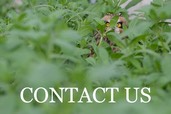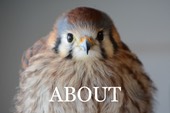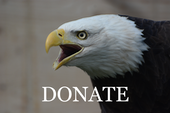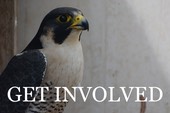Tis the Season for Giving Thanks
Bob and I have far too much to be thankful for to limit it to one day of Thanksgiving. In addition to family and friends, we are grateful for our BMW Family. You generously give of your time, talents and finances. With your help, Blue Mountain Wildlife has given thousands of birds a second chance at life and touched the lives of thousands of people through educational outreach. Thank you so very much.

We had a wonderful Thanksgiving holiday, although a dusting of snow made Thanksgiving look a lot like Christmas! Barbary Falcon Nikki took the snow in stride. Although Barbary’s are native to the Barbary Coast of Africa, Nikki grew up in Spokane, WA. She’s accustomed to cold weather (and she has a radiant heat panel to snuggle up to when it's really cold).
The Week in Review
There were eight new admissions this past week: one American Goldfinch, one Barn Owl and six Red-tailed Hawks. Unfortunately, four of the hawks were gunshot victims. Two of the hawks had recovered from previous gunshot injuries.
Red-tailed Hawk 19-556
On Thanksgiving morning Bob and I drove to Irrigon for a young Red-tailed Hawk who had “glided” into a yard.

Back at the clinic, an exam revealed an air rifle pellet in each wing. The wounds appeared to be at least a week old. The hawk was 25% underweight, indicating he had been in good shape before he was shot. The right humerus was damaged, but did not appear to be fractured. Part of the left ulna was shattered. Another pellet is visible in the right shoulder. There was no sign of a wound or bruising, indicating the pellet had been there for some time. The prognosis for a complete recovery is guarded, but we are going to give the hawk a chance. The left wing has been immobilized so the fractures can heal.
The hawk’s blood lead level is 18 micrograms/deciliter, a toxic amount of lead. We have found that blood lead levels increase in hawks who have previously ingested animals shot with lead ammunition if they subsequently fracture a bone. One explanation could be that the ingested lead is absorbed into the blood stream, then it is deposited in other tissues, including bone. If the bird fractures a bone, calcium is pulled from the bird's bones to heal the fracture. My chemistry is kind of rusty, but it may be that the bird can’t differenciate between calcium and lead resulting in lead being pulled out of the bones along with calcium. The hawk is receiving calcium supplements and chelation to remove the lead.
Red-tailed Hawk 19-557

19-557 was a young hawk, not yet a year old, who had managed to recover from a fractured radius. Then someone shot him. The damage was too extensive to repair and he was euthanized.
Red-tailed Hawk 19-558

19-558 had recovered from a radius fracture after being shot. Then he was shot a second time fracturing his ulna and damaging his elbow and wrist. The prognosis for having a functional wing was very poor and the hawk was euthanized.
Donate While You Shop
You can support Blue Mountain Wildlife when you shop online by going to smile.amazon.com and designating Blue Mountain Wildlife as your charity of choice. Amazon will donate a percentage of the cost of your purchase to BMW. Thank You!!!








